Thanjavur Doll
Makers of the famed bobble-head and roly-poly dolls are facing stiff competition from electronic toys and e-commerce platforms, besides a severe labour crunch and shortage of clay.
- Introduced by - The craft was brought to Thanjavur by Maratha ruler Raja Serfoji in the early 19th Century.
- Types - Thanjavur dolls are primarily of two kinds, one is the bobble-head version, and the other is the tilting doll (roly-poly) version.
- The dancing girl, one variation of a bobble-head doll, once tapped on the head, bobs its head in response, which is due to the metal string that links the head of the doll to its stable base.
- Made of - The doll is made of terracotta, papier-mache (a mixture of paper, glue, flour and water), plaster of Paris and other materials.
- A mixture of vandal mann (fine silt deposited by rushing streams of water), kali mann (clayey riverbed mud), and manal (loose aggregate) is required to make the dolls’ pedestals.
Thanjavur doll earned GI tag in 2009.
- Fungicide - Copper sulphate powder is added as a fungicide.
- Making - All the dolls have a lightweight body made of tapioca flour, papier-mache and plaster of Paris cooked and kneaded to the consistency of ‘roti’ dough.
- Each toy is made in halves, by pressing the rolled-out ‘doll dough’ into cement moulds, with liberal dusting of chalk powder.
- Dancing doll - The dancer dolls have a heavier pedestal-shaped feet section made of clay.
- The dancing doll has four sections (including the arms that are individually glued to the torso), each balancing on the other with the help of inner metal loop hooks that create the light bobbing movement.
The dancing dolls are one of four papier-mâché handicrafts certified by the Tamil Nadu State government. The others are the two-piece moulded idols, multi-jointed figurines, and wall-hanging panels.
- Roly-poly - The roly-poly toys, on the other hand, use a bowl-shaped clay base (shaped with moulds) that ensures that the doll remains upright.
- Paint - Once assembled, the dolls are sandpapered and hand-painted, with watercolours for the dancing doll and oil paints for the others.
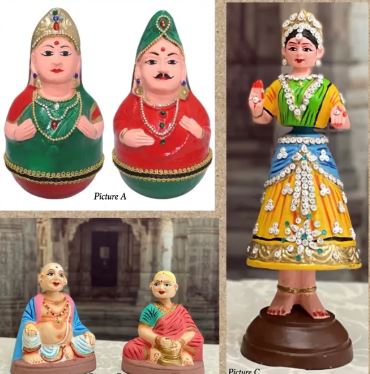
References
- The Hindu – Thanjavur doll industry out of the doldrums
- News 18 – Thayailatti Bommai might soon become a forgotten tale
- The Indian Express – Thanjavur dolls
Mayurbhanj’s Red Ant Chutney
Mayurbhanj’s red ant chutney receives GI tag.
The Chutney
- Made with - The chutney is made with read weaver ants by the tribal people of Odisha’s Mayurbhanj district.
- Other name - It is also known by the name Similipal kai Chutney.
- Making - Red weaver ants are collected from the nests along with their eggs and cleaned.
- After that, the chutney is prepared by mixing and grinding salt, ginger, garlic and chillies.
- Characteristics - The hot chutney has a pungent and sour taste and is appetizing.
- The savoury chutney is popular in the region for its healing properties and also deemed important for nutritional security of the tribal people.
- Medicinal values - Consuming the species can help boost the immune system and prevent diseases.
- The tribal healers also prepare a medicinal oil in which they dip the ants along with pure mustard oil.
- After a month, this concoction is used as a body oil for babies and to cure rheumatism, gout, ringworm and other diseases by the tribes.
Red Weaver Ants
- Other name - Red weaver ants are also known as kai pimpudi.
- Found in - The red weaver ants are indigenous to Mayurbhanj and are found in abundance in the jungles of every block area of the district, including in the Similipal Tiger Reserve, throughout the year.
- Nests - The red weaver ants form colonies with multiple nests in trees.
- Each nest is made of leaves stitched together with the silk produced by their larvae.
- They mostly lodge in trees like mango, sal, jambu and jackfruit.
- The nests are strong enough against wind and impermeable to water.
- Kai’s nests are usually elliptical in shape and range in size from single small leaf folded and bound onto itself to large nest consisting of many leaves and measure over half a metre in length.
- Families - The Kai families consist of three categories of members, workers, major workers and queens.
- Workers and major workers are mostly orange coloured.
- Workers are 5-6 millimetres long, major workers are 8-10 mm long with strong legs and large mandibles and queens are 20-25 mm long and greenish brown coloured.
- Diet - They feed on small insects and other invertebrates like beetles, flies and hymenopterans.
- They do not sting but have a painful bite into which they can secrete irritant chemicals from their abdomens.
- Bio-control agents - They are also recognised as bio-control agents because they are aggressive and will prey on most arthropods entering their territory.
- They protect a variety of tropical crops against insect pests, acting as an alternative to chemical insecticides.
- Nutritional values - Red weaver ants are found to contain valuable proteins, calcium, zinc, vitamin B-12, iron, magnesium, potassium, sodium, copper, amino acids, among others.
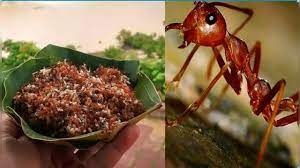
References
- Down To Earth – Mayurbhanj’s red ant chutney receives GI tag
- The Hindu – Mayurbhanj’s superfood ‘ant chutney’
- The Indian Express – Stinging Sensation
Geographical Indication (GI) Tag Products
Over 17 products from Odisha, Arunachal Pradesh, West Bengal, and J&K bagged the coveted Geographical Indication tag.
GI Tags
- Geographical indications assign products to the place of its origin.
- It conveys an assurance of quality and distinctiveness for such goods.
A total 504 items from different parts of the country have had the tag so far since 2004.
- GI is defined under Article-23 and 24 of the Trade-Related Aspects of Intellectual Property Rights (TRIPS) Agreement of the World Trade Organization (WTO).
- India is a member of the WTO and thus enacted the Geographical Indications of Goods (Registration & Protection) Act, 1999 that came into force from 2003.
Under Articles 1 (2) and 10 of the Paris Convention for the Protection of Industrial Property, geographical indications are covered as an element of Intellectual Property Rights.
- GI tagged products can be both Natural or Man-made.
- The GI Tag is valid for ten years.
- The essential difference between GI and other intellectual properties (IP) is that, GI is a collective intellectual property right.
The first product in India to be accorded with GI tag was Darjeeling Tea in the year 2004-05.
Recent GI Tagged Products
|
Arunachal Pradesh
|
|
Wancho Wooden Craft
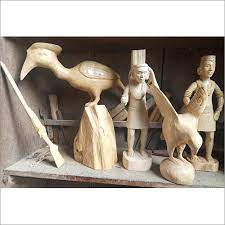
|
- Wancho wooden craft items are unique as they feature tobacco pipes with head-shaped bowls and drinking mugs showing warriors carrying heads.
|
|
Adi Kekir (Ginger)
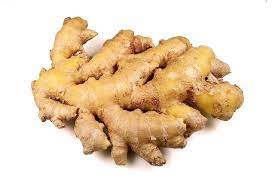
|
- Adi Kekir is a variety of ginger produced in East Siang, Siang and Upper Siang districts of Arunachal Pradesh.
- It is known for its taste and size.
|
|
Handmade Carpets
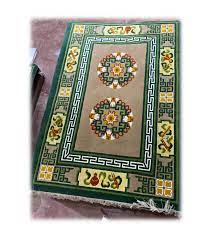
|
- The handmade carpets made by Tibetan refugees, who live in various parts of the state, are known for their typical designs, motifs and textures.
|
So far, six products from Arunachal Pradesh have received the GI certification.
|
West Bengal
|
|
Tangail Saree
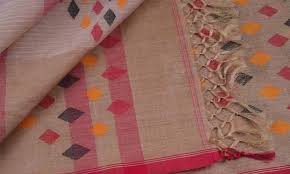
|
- The hugely popular tangail cotton sarees have finer count and are decorated with extra warp designs using coloured yarn.
- It is a simplification of the jamdani cotton saree but with minimal designs in the body portion.
|
|
Garad Saree
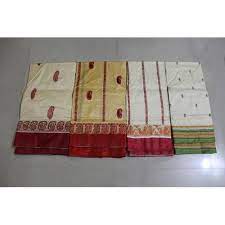
|
- Garad silk sarees are characterized by a plain white or off-white body, an unornamented coloured border and a striped pallu and were earlier worn for performing pujas.
- With the change in taste, various colours and woven patterns have been introduced.
|
|
Korial Saree
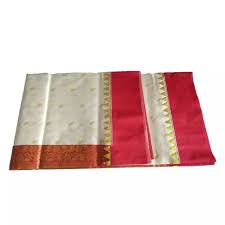
|
- The korial sarees are lavish silk ones.
- They are in either white or cream base and have the characteristic heavy gold and silver embellishments of Benarasi sarees in the border and pallu.
|
|
Kalonunia Rice
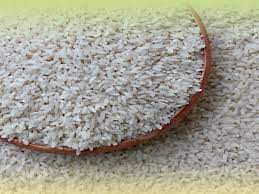
|
- It is one of the most sought after rice variety in north Bengal.
- Kalonunia is a traditional black-husked non-Basmati type scented rice of Tarai region (foothills of eastern Himalayas) of West Bengal, India.
|
|
Sundarban Honey
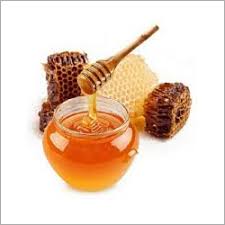
|
- The Sundarban honey, called Mouban, is a prime minor forest produce (MFP) in Sundarbans Biosphere Reserve.
- The residents of Sundarbans are called Mauli.
|
With this, Bengal has a total of 27 GI tags to date.
|
Odisha
|
|
Dhenkanal Magji
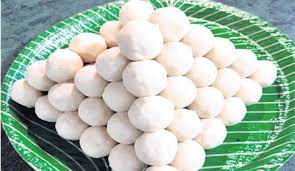
|
- It is a famous and unique sweet of the Dhenkanal district.
- Its taste, flavor, and method of preparation have made it unique.
- The buffalo milk cheese gives it a unique flavor and cardamom powder adds to its unique aroma.
|
|
Khajuri Guda
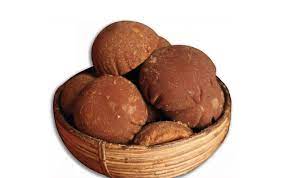
|
- Khajuri Guda (date palm jaggery) is a natural sweetener produced from the sweet juice of palm called neera.
- The jaggery is prepared by the tribal populations, including the Lanjia Saura, of Gajapati, Boudh, Angul, and Dhenkanal districts in Odisha.
|
|
Similipal Kai Chutney
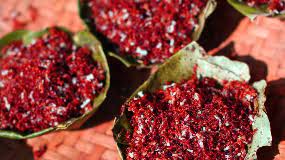
|
- The chutney is made with read weaver ants by the tribal people of Odisha’s Mayurbhanj district.
- The hot chutney has a pungent and sour taste and is appetizing.
|
|
Nayagarh Kanteimundi Brinjal
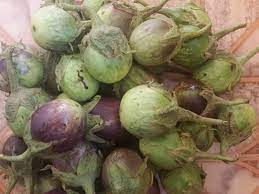
|
- It is a tasteful vegetable with lots of prickly thorns on it as well as the whole plant.
- It is green in colour and round in shape containing more seeds as compared to other genotypes.
- The vegetable crop is cultivated in the sandy soil and having unique taste, flavor.
- This crop is grown both in the Kharif and Rabi seasons.
|
|
Kapdaganda shawl
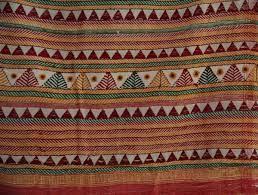
|
- The traditional knitted shawls of the hill tribe Dongaria Kondh are both unique and ancient.
- Their culture, tradition, faith, and beliefs, as well as the biodiversity of their forests are reflected in the shawls.
- Dharanipenu, the much adored goddess of the Dongaria, has a home in every village.
- The art and drawings made in the Dharanipenu residence are reflected in their shawls.
|
|
Koraput Kalajeera Rice
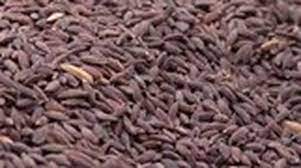
|
- Koraput Kalajeera Rice known as the ‘Prince of Rice’ is an aromatic variety originating from Koraput district of Odisha.
- Upholding the nutritional and cooking quality, the rice looks like coriander seeds.
|
|
Lanjia Saura Paintings
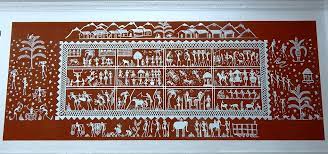
|
- The Lanjia Saura paintings are a style of wall mural art.
- Those paintings also called ekons or the idital, and have a significant spiritual importance for the tribe.
- The Lanjia Sauras are an indigent society today, and labour in preserving their culture, the iditals being an important part of it.
|
With this, Odisha has received 25 GI tags to date.
|
Other States
|
|
Gujarat
|
|
Kachchhi Kharek
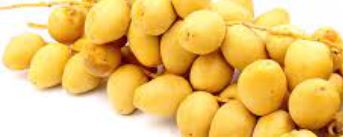
|
- They are a variety of dates grown in the Kutch region of Gujarat, India.
- They are highly regarded for their taste, texture, and nutritional value.
- Kutchi Kharek dates have a soft and chewy texture.
- They are known for their natural sweetness and rich, caramel-like flavor.
|
|
Jammu & Kashmir
|
|
Ramban Anardana
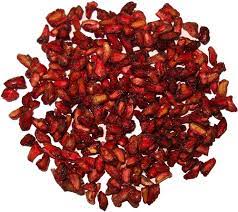
|
- Anardana (Punica granatum) is a small wild fruit-bearing tree.
- The fruits are harvested for its fleshy seeds, which are sundried to make anardana, a product of commerce used in medicinal and culinary preparations.
|
References
- The Hindu – GI tags for over 17 products
- Times of India – Several products gets GI tag
- Business Insider – Seven Odisha products to get GI tag
- WIPO – Geographical Indications
Indian Landslide Susceptibility Map
IIT Delhi team makes first hi-res landslide risk map for India.
Landslide Susceptibility
- Landslide susceptibility is the likelihood of a landslide occurrence in an area depend on the terrain condition.
- It is an estimate of where landslides will have occurred.
- Relative susceptibility to land sliding is used as a measure of the potential hazard within an area.
- It is applicable to regions with different geomorphologic and vegetation characteristics.
National Landslide Susceptibility Mapping (NLSM) programme
- Geological Survey of India has launched and undertook a national programme on landslide susceptibility mapping with an aim to cover the 0.42 million sq. km landslide prone areas of the country.
- This national programme was formally launched in 2014.
- Objectives - To create a dynamic National Landslide Susceptibility Geodatabase for India.
- To prepare GIS based seamless Landslide Susceptibility Maps of India on 1:50,000 scale.
- To prepare a nation-wide repository on GIS-based Landslide Inventory.
The Map
- A landslide susceptibility map identifies areas which are subject to landslides and is measured from low to high.
Landslides are a unique and deadly problem in India and unlike floods, they are less widespread and harder to track and study with satellites.
- The landslide susceptibility map takes into account where the landslides occur and what causes them (slope, soil type and the impact of the flow of water in an area).
The Indian Landslide Susceptibility Map is the first of its kind by virtue of being on a national scale, leaving out no locations in the country.
- Process - Nearly 1.5 lakh landslide events were obtained via the Geological Survey of India (GSI) and other, global sources.
- GeoSadak, an online system that has data on the national road network in India, was particularly helpful in preparing the map, because it displayed data on roads even outside cities.
The fewer trees there are in a place, the closer it is to road-building activity, and the steeper the local slope, the more unstable the place will be and thus more prone to landslides.
- Applications - The map will help the policymakers to assess vulnerability and take appropriate measures for mitigation.
- The map is also expected to be useful for organisations involved in investigating and mitigating landslides, like the GSI, the Ministry of Mines, and the National Disaster Management Authority.
- High risk regions - The map acknowledged some well-known regions of high landslide susceptibility, like parts of the foothills of the Himalaya, the Assam-Meghalaya region, and the Western Ghats.
- It also revealed some previously unknown places with high risk, such as some areas of the Eastern Ghats, just north of Andhra Pradesh and Odisha.
A cartogram is called a thematic map in which a mapping variable, such as travel time, population, or GNP, is substituted for land area or distance.
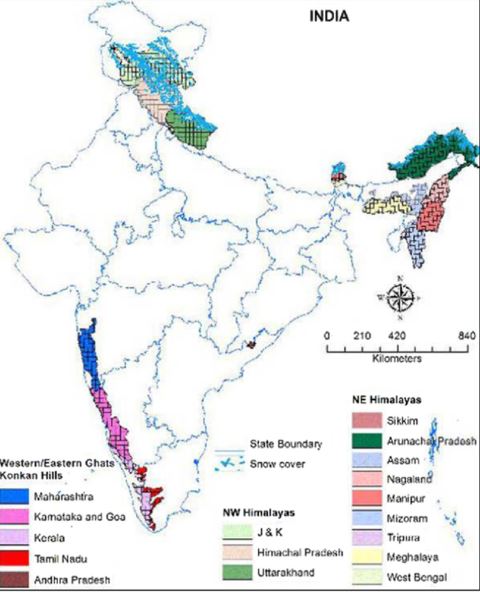
References
- The Hindu – IIT Delhi team makes landslide risk map for India
- EOS – A landslide susceptibility map for India
Kadamba Inscription
10th century Kadamba inscription written in Kannada, Sanskrit found in Goa.
Kadamba Dynasty (345-535 C.E.)
- Extent - The Kadamba dynasty was an ancient Indian dynasty that ruled over parts of South India, particularly the present-day Karnataka region, from the 4th to the 6th centuries CE.
- Founder - The Kadamba dynasty is believed to have been founded by Mayurasharma, who was originally a feudatory of the Pallavas, a prominent dynasty of South India.
- Capital - The early capital of the Kadamba dynasty was Banavasi, located in present-day Karnataka.
- Later, the capital was shifted to Vaijayanti (modern-day Banavasi).
- End - The Kadamba kingdom came to an end with Pulakeshin II’s capture of Banavasi during the reign of Ajavarman.
- Kadambas of Goa - They were the subordinates of Chalukyas of Kalyana.
- Chalukyan emperor Tailapa II appointed Kadamba Shasthadeva as mahamandaleshwara of Goa for his help in overthrowing the Rashtrakutas.
- Kadamba Shasthadeva conquered the city of Chandavara from the Shilaharas in 960 A.D and later, he conquered the port of Gopakapattana (present Goa).
- Gundayya, the son of Talara Nevayya, may have participated in this battle, and won the port at the cost of his life.
- His father may have erected a memorial stone with the inscription in the temple of Mahadev of Cacoda to commemorate the heroic fight of his son.
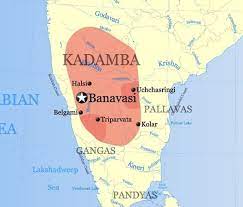
The Inscription
- The inscription was discovered in the Mahadeva temple at Cacoda in southern Goa.
- It is in the literary style of Talangre inscription of Jayasimha I of the same period.
- Message - Talara Nevayya’s son Gundayya having taken a vow to fulfil his father’s desire of capturing a gopura of the port of Goa, fought and died after fulfilling his father’s wish.
- The record is composed as a vocal statement on the death of his son from the mouth of a lamenting father.
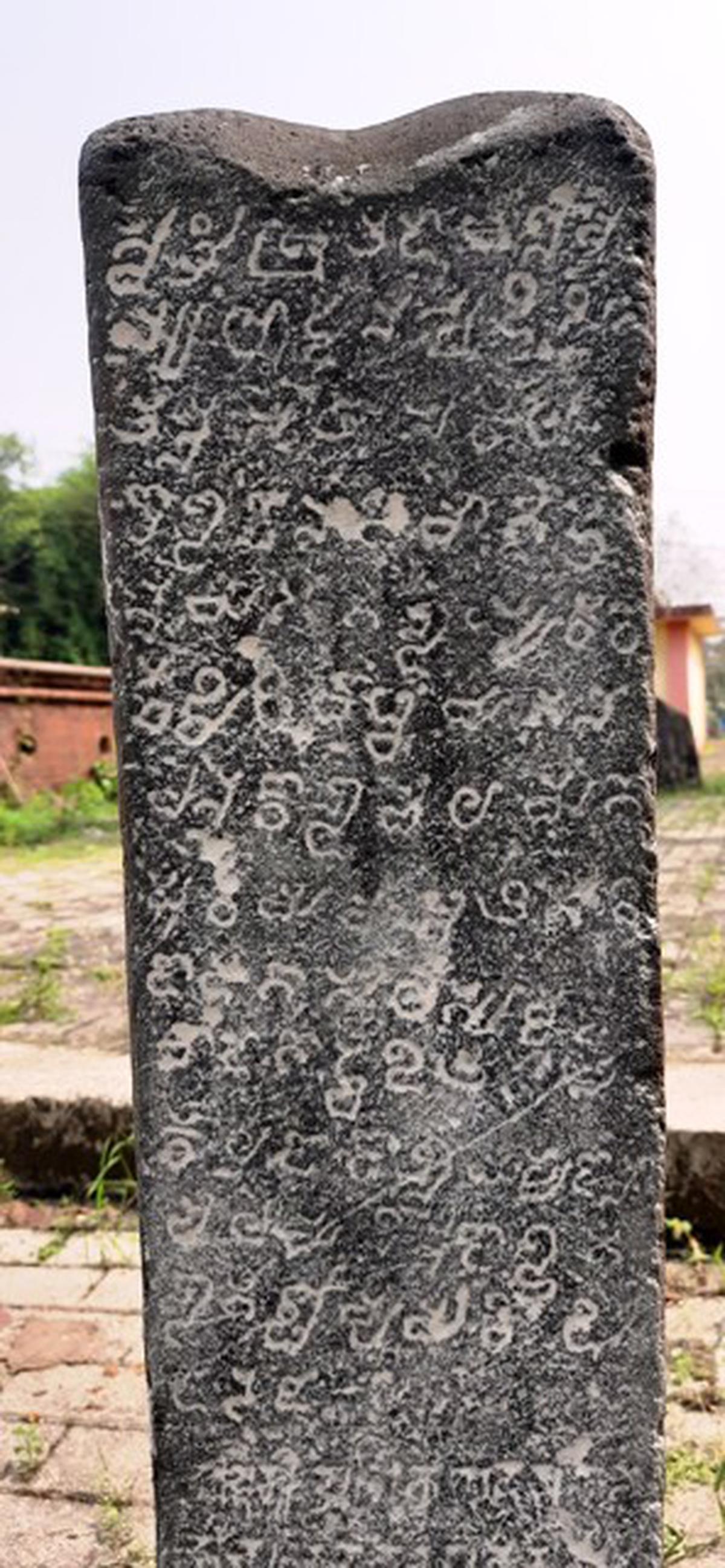
References
- The Hindu – 10th century Kadamba inscription found in Goa
- Times of India – 10th century Kadamba inscription found in Goa
- Britannica – Kadamba Dynasty
|
Other Important News
|
|
PRERANA program
- Prerana is a week-long residential program for 20 selected students (10 boys and 10 girls) of class IX to XII, aimed at empowering them with leadership qualities.
- Ministry – Ministry of Education.
- Prerana program will run from a Vernacular School, established in 1888, in one of the oldest living cities of India, Vadnagar, in Gujarat.
- The curriculum of Prerana School has been prepared by IIT Gandhi Nagar and is rooted in 9 value-based themes.
|
|
Education and Research Network (ERNET)
- The Education and Research Network is an autonomous scientific society of the Ministry of Electronics and Information Technology.
- ERNET was established in 1986 to provide a networking infrastructure for the research and education community with its headquarters are in New Delhi.
- ERNET's mandate is to support the needs of academic and research institutions through consultancy, project management, training, and other value-added services.
|
|
Kuppa Pumped Hydro Storage Project
- NHPC Limited and Gujarat govt sign MoU for Rs.4,000 crore in the proposed 750 MW Kuppa Pumped Hydro Storage Project in Chhota Udaipur, Gujarat.
- It aims to utilize pumped hydro storage projects for energy storage and addressing.
- It is a part of “Vibrant Gujarat” initiative.
|
|
North India's 1st Biotech Industrial Park
- North India’s 1st industrial biotech park inaugurated in Jammu and Kashmir’s Kathua recently.
- Biotech Parks offer facilities to scientists and small and medium-sized enterprises (SMEs) for technology incubation, demonstration, and pilot plant studies.
- The parks are established to facilitate product advancement and innovation through the development of biotechnology industrial clusters.
|
|
GolDN
- IIT Bombay has developed an instrument, GolDN (pronounced as Golden) for melt-mixing of waste thermoplastic polymers and inorganic particulate fillers to manufacture polymer composites.
- GolDN is a single screw extruder that mechanically recycles waste plastic polymers through melt-mixing.
- The instrument can manufacture composites from thermoplastic waste that can be molded into materials like paver blocks, tiles, and bricks.
|
|
Zosurabalpin
- Researchers have identified a new class of antibiotics named Zosurabalpin with the potential to tackle a drug-resistant bacterium, Acinetobacter baumannii recently.
- It inhibits the transport of lipopolysaccharide (LPS) molecules.
- Zosurabalpin was found to be effective against CRAB (carbapenem-resistant Acinetobacter baumannii)-induced pneumonia and sepsis in mice models.
|
|
No sale of blood
- The Central Drugs Standard Control Organisation (CDSCO) said that blood at hospitals or private banks and centres is “not for sale” but allowed for a “processing charge”.
- The revised guidelines said that processing fees can be charged for blood or blood components, which ranges from Rs 250 to Rs 1,550.
- The Central Drugs Standard Control Organisation (CDSCO) is a statutory body established under the Drugs and Cosmetics Act, 1940.
|
|
Tur dal procurement portal
- Cooperation ministry recently launched a portal through which farmers can sell tur dal to government procurement agencies at the minimum support price (MSP) or market price, whichever is higher.
- Govt. Procurement agencies - National Agricultural Cooperative Marketing Federation of India (Nafed) or National Cooperative Consumers’ Federation of India (NCCF).
|
|
Alvaro
- Alvaro, the 1st cyclone of 2024, made landfall near Morombe in Madagascar recently.
- Mozambique named the cyclone Alvaro.
- Resilience and Preparedness to tropical cyclones across Southern Africa (REPRESA) is an international initiative that aims to improve community preparedness for tropical cyclones in Southern Africa.
|
|
Clean energy target by Himachal Pradesh
- The Himachal Pradesh government made 2 major decisions recently.
- All government offices have been prohibited from purchasing petrol or diesel vehicles since January 1.
- Simultaneously, under another scheme, people will be paid Rs 20,000 per month if they donate 3 bighas of land for the construction of a solar power plant.
- These decisions have been taken to make Himachal Pradesh a clean and green energy state by March 31, 2026.
|


